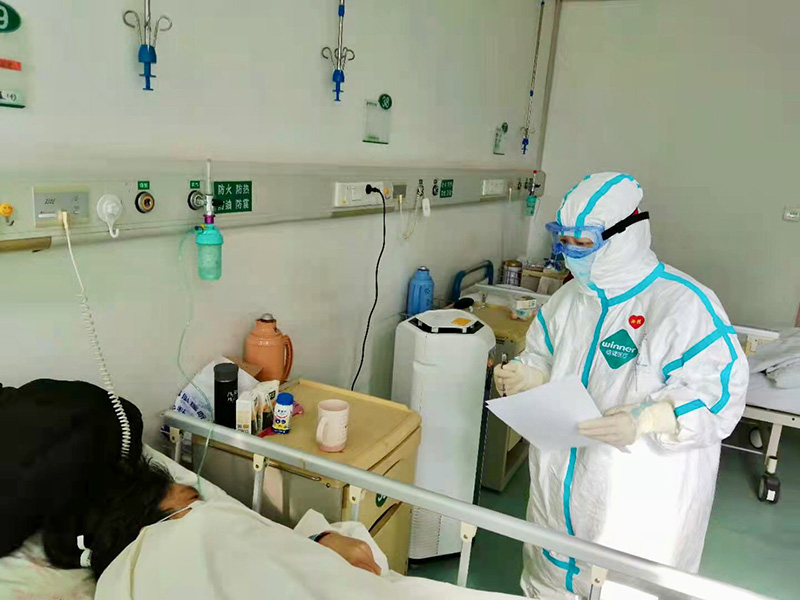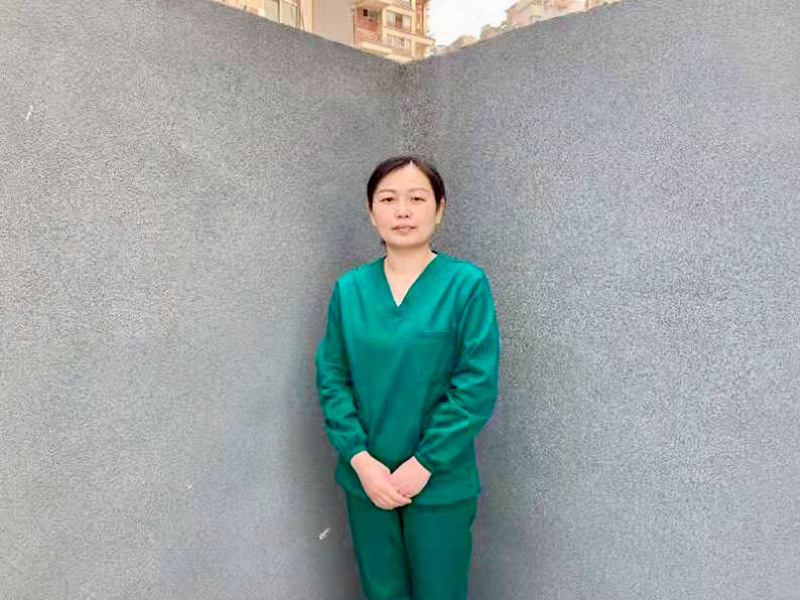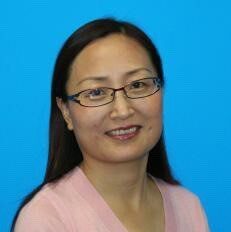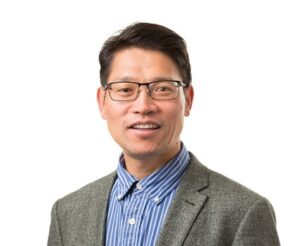Frontline Stories
A Veteran of Earlier Pandemics Fights on a New Front in Wuhan
14 Aug 2022“We were like soldiers,” Dr. Hua Niu said. “We wore uniforms and armbands and followed orders.” She was one of thousands of health-care professionals from all over the PRC who trooped to Wuhan, Hubei Province to help fight an emerging and quickly spreading virus in February 2020. The city was ground zero for the coronavirus disease (COVID-19) pandemic.
Now a chief physician at Anhui Provincial Chest Hospital, where she has worked for 20 years, Dr. Niu, 42, specializes in respiratory and critical disease treatment, overseeing 18 staff. The imposing hospital has 1,300 beds, 26 clinical departments, and 827 health-care professionals. It’s in Heifei (population 7.5 million), the capital city of Anhui Province (population 64 million), eastern PRC.
After news of the pandemic broke, the hospital, a 5-hour drive from Wuhan, was on high alert, with continuous, tense text messages flooding hundreds of phones.
After news of the pandemic broke, her hospital, a 5-hour drive from Wuhan, was on high alert, with continuous, tense text messages flooding hundreds of phones. Any news, official or unofficial, put staff on edge, especially when they heard that health-care workers in Wuhan lacked personal protective equipment (PPE) and supplies.
A veteran of the battle on two fronts against the 2003 severe acute respiratory syndrome (SARS), Dr. Niu faced the still-unknown disease more calmly than most. She was part of the seventh medical team from Anhui and the third from her hospital to be sent to aid Wuhan. “By then,” she said, “the PPE shortage had eased somewhat. We each received a big suitcase for PPE, personal daily needs, backup medicine, and so on.”
While she wasn’t anxious about traveling to Wuhan, however, she had her family to deal with. She’s an only child, her daughter was only 8 at the time, and her husband was an extremely busy surgeon. Her grandmother was living with them, bedridden because of a stroke and suffering a high fever. Wuhan was already in lockdown, and all over the country people with fever were being treated with caution; Dr. Niu’s grandmother couldn’t go to the clinic or hospital. Dr. Niu cared for her at first, bringing home infusion liquid, unsure that her fever could be controlled. The grandmother was eventually admitted to Dr. Niu’s hospital, where family could visit her.
Dr. Niu’s team worked with other medical teams from all over the PRC to help Wuhan in the war against the unprecedented outbreak.
Dr. Niu’s team worked with other medical teams from all over the PRC to help Wuhan in the war against the unprecedented outbreak. For 34 days, they worked long hours in Wuhan Central Hospital, which had redesigned its wards for COVID-19 patients. A few minutes away from the hospital is the wet market from which the virus had spread.
Health-care professionals of the hospital had been infected. Some died. Their photos hung on corridor walls were a somber reminder of what was at stake.
The hospital was where Dr. Li Wenliang had worked. An eye doctor, he died on 7 February 2020, less than 2 weeks before Dr. Niu and her colleagues arrived, after contracting what he had tried to warn his colleagues was a new SARS-like disease. Other hospital health-care professionals had also been infected. Some died. Their photos hung on corridor walls and in the buffer area, where Dr. Niu and her colleagues changed their clothes, a somber reminder of what was at stake.
Some local staff were their patients. A nurse whose wife had recently given birth and who had not seen the baby yet. A chief physician from the nephrology department. Seeing the hospital staff’s suffering was hard on Dr. Niu and her team.
She was the deputy group leader of the COVID-19 critical care group in the seventh medical team, composed of about 170 health professionals and fewer than 10 associate chief physicians. She led one of the six critical care groups.
She walked briskly through the isolation ward the first time she and a deputy director made the rounds. Other staff told her to slow down because they feared that raising the dust on the floor would spread the virus. “I had worked in isolation wards,” she said, “including during the SARS outbreak, so I wasn’t worried. But some doctors were jumpy.”
 Dr. Niu making the rounds of COVID-19 patients.
Dr. Niu making the rounds of COVID-19 patients.
The staff worked in three 8-hour shifts, taking 2 hours to get from their apartments to the wards. Public buses were turned into shuttles for health professionals. They had to be in the bus 30 minutes before departure, spent an hour on the road, and took another 30 minutes to disinfect and get into their PPE. After their shift, they had to go through the reverse process, getting home 2 hours later.
Caring for the elderly was especially hard. “Family members and private caregivers were barred from the wards,” Dr. Niu said. “And the nurses were overworked. Sometimes an elderly patient would fall and break a bone. We could only take X-rays and send them to specialists, who helped assess and diagnose patients remotely. We had to deal with family members by phone.”
Dr. Niu ate only twice a day. “I didn’t drink anything at the hospital,” she said. “We didn’t eat anything, either, although the hospital provided lunch boxes. We didn’t want to take our face masks off.” She developed stomach trouble and, not long after returning to Anhui, had to have a gastroscopy.
Staff endured other aggravations. “I wore diapers so I wouldn’t need to go to the toilet,” she said. “We stood in line to go to the toilet and to shower after our shift. We had to exchange shifts so that menstruating nurses and doctors could take time off. But we managed.”
She was exhausted. “Even after work,” she said, “I had to communicate with patients’ families and the hospital, using my own phone. Some patients had had strokes, some had diabetes, some were on dialysis. We couldn’t conduct face-to-face multidisciplinary medical consultation. But we just got on with it.”

Dr. Niu in her scrubs: She and her colleagues from Anhui kept up their spirits while battling the COVID-19 outbreak in Wuhan in February 2020.
Although Dr. Niu was more seasoned than many of her colleagues, the work started to get to her. “The night shift could be hard,” she said. “I couldn’t sleep well during the day. My apartment was near an overpass. There wasn’t much traffic—just trucks, some ambulances—but it was noisy. My ears started ringing.”
Some health-care workers needed comforting. “Some of us were senior and experienced,” she said, “but we had a young nurse—the only health-care worker sent from a hospital in Tongling—who became nauseous and had cold-like symptoms. Our team’s head nurse wanted to give her some medicine. The young nurse was frightened and told her not to come near and to leave it at the door. The young nurse described her symptoms to me over the phone. She was in a near panic but I didn’t think it was COVID-19 and tried to soothe her. We shared the medicine we had brought from Anhui with her and she felt better after 2 days.”
Dr. Niu and her colleagues managed to keep up their spirits. “Eleven of us from Anhui lived in separate rooms in the same apartment building,” she said. “We weren’t allowed to visit each other but we could stand in our doorways and chat. When we distributed supplies, we could catch up and socialize.”
It helped that her family was fine. “They weren’t that worried,” she said. “My grandmother was often in tears, but my parents were looking after her. My mother-in-law helped look after my daughter. My husband checked her homework. The child was a welcome distraction for everyone. I had a phone or video call with the family almost every day.”
“When we notice something extraordinary or suspicious, such as rare diseases, we have to tell our superiors. Nipping the problem in the bud is more effective than containing it after it’s spread.”
“We need to be meticulous,” Dr. Niu said, reflecting on what should be done to prevent another pandemic. “When we notice something extraordinary or suspicious, such as rare diseases, we have to tell our superiors. Nipping the problem in the bud is more effective than containing it after it’s spread.”
“Female comrades have physical issues, have young kids. But at the height of the pandemic, they overcame all challenges. I think human capacity to endure is almost limitless.”
Women, she noted, have a double burden. “If tasks cannot be completed within working hours,” Dr. Niu said, “we need to work overtime. Many become hoarse, like me, or sick. After work, there’s housework. I take care of things at home. I go to sleep late. It’s either be more efficient at work and at home or else stay up at night.”
“Female comrades have physical issues, have young kids,” she said. “But at the height of the pandemic, they overcame all challenges. I think human capacity to endure is almost limitless.”
Authors

Xuefeng Zhong
Interviewer and Public Health Specialist (Consultant)

Lin Li
Translator and Researcher (Consultant)


